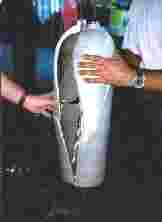That's not quite what I heard at the last PSI class I took. Seems some of this is now in the CFR and is "Law."
surely he provided you a link or reference to which CFR that is ?

(that is required for the RECREATIONAL dive industry?
It's required by OHSA for COMMERCIAL DIVERS, but not recreational divers. OHSA has no authority over recreational.
If you read them, you'll just find that basically that Section 29 Code 1910.421(g) requires: (for COMMERCIAL DIVERS, under OHSA).
Equipment inspection. The breathing gas supply system including reserve breathing gas supplies, masks, helmets, thermal protection, and bell handling mechanism (when appropriate) shall be inspected prior to each dive.
Also inspection is required for COMMERCIAL DIVING cylinders. (not recreational)
Section 29 CFR 1910.101(a)
"Inspection of compressed gas cylinders." Each employer shall determine that compressed gas cylinders under his control are in a safe condition to the extent that this can be determined by visual inspection. Visual and other inspections shall be conducted as prescribed in the Hazardous Materials Regulations of the Department of Transportation (49 CFR parts 171-179 and 14 CFR part 103). Where those regulations are not applicable, visual and other inspections shall be conducted in accordance with Compressed Gas Association Pamphlets C-6-1968 and C-8-1962, which is incorporated by reference as specified in Sec. 1910.6.
Let me note again that these are for COMMERCIAL DIVING regulations. Not required for recreational cylinders you own.
I know here we have the DOT regulations we all have to follow on our tanks, ie the yearly visual and 5yr hydro...but what are the regulations in some of these other countries?
Can you give the DOT regulation that requires a "yearly visual"? (there is none). Hydro is required. but not a yearly visual.









